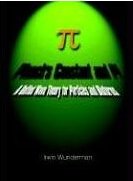Planck's Constant and Pi: A Unified Wave Theory for Particles and Bioforms (Buy Now)
Work on this theory began incidental to a thesis investigation when the author was a graduate student at Stanford University 40 years ago. It was observed that waves derived from harmonic exponential functions had numerous basic flaws. Over the intervening decades, sporadic efforts continued in attempt to derive a basis for harmonic generation that would avoid the perceived shortcomings. The fmdings culminate in this book. They are profound in that they suggest our traditional interpretation of the natural number system is incomplete. A separate category of enumerating smallest non-divisible entities exists. It distinguishes how quanta or monads must classify as a population. Because fractional values then become disallowed, inter-integer transitions constitute a different class of functional space that is orthogonal to conventional integer values. Scalar natural numbers become vectors. An elegant periodicity in their ordinal sequence brings about a plethora of harmonic wave modes. Derived cyclic phenomena are extremely basic allegedly representing the waves of quantum theory, matter waves, electromagnetic waves, indeed, all waves of physical reality. Mathematically discrete rather than continuous solutions infer various speculations about the physics that could produce such results. The harmonics embed inextricably within the sequence of ordinal integers suggesting resultant periodicities depict many phenomena of Nature like nuclear/electronic structure and DNA type biological entities.


